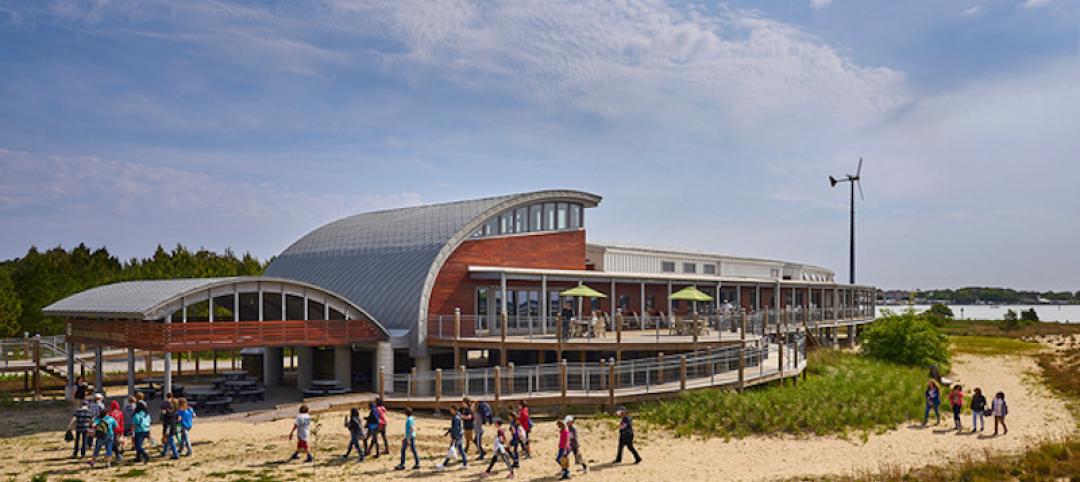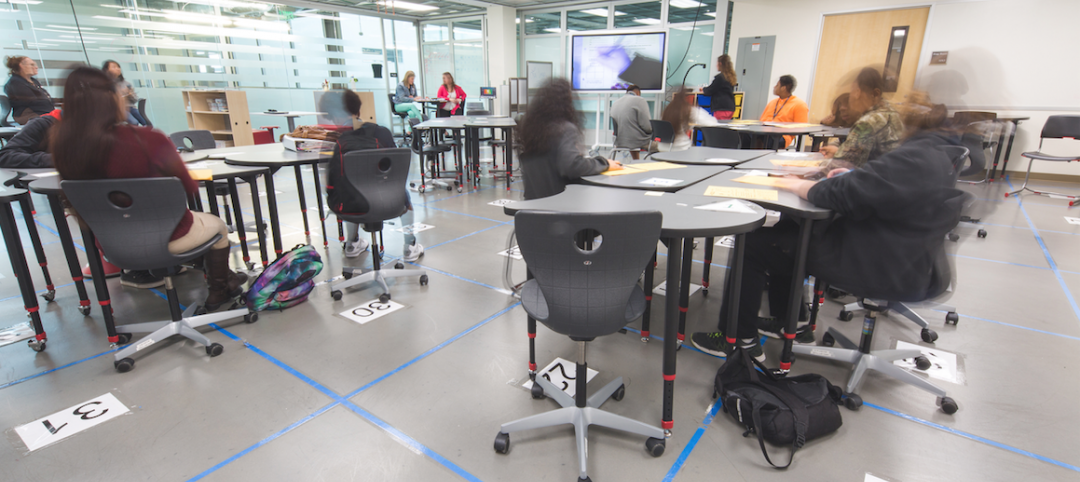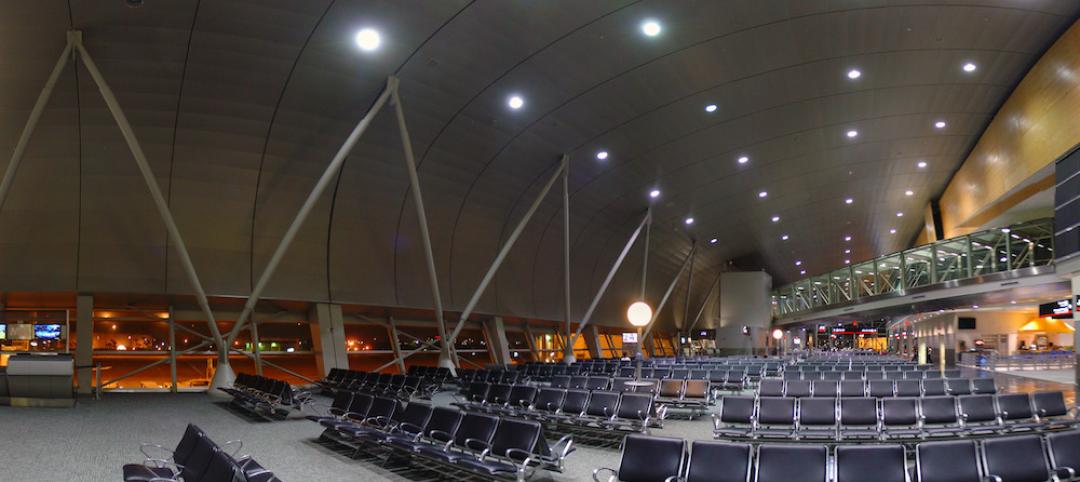While 3D building information modeling (BIM) and digital prototyping have taken away the need for physical shop-built models and created whole new workflows for architects and engineers, clients and authorities with jurisdiction still want physical models to exhibit at planning hearings and show to prospective commercial building tenants or condo unit buyers.
Until recently, most 3D printers cost upwards of $40,000. Burlington, Mass.-based Z Corporation recently introduced the ZPrinter 150 (grayscale only; $14,900) and ZPrinter 250 (CMYK color; $24,900). Compare those prices to Z Corp's own ZPrinter 450, at $45,000.
These new machines are aimed at small architecture studios and firms that want to print their own design iterations to enable closer study of design options while also enhancing communication between project team members and owners. AEC firms can now provide resin-printed 3D color models from any CAD file at greatly reduced cost, due to the lower prices of the latest 3D printers and their associated production materials.
Rather than using polymers or other manufacturing materials, Z Corp's machines use an inkjet printing system based on Hewlett-Packard technology. Here's how it works: A 3D CAD file is imported into the Zeditpro software (included with the printer). The software slices any CAD or BIM file into thin cross-sections and feeds them into the 3D printer. The printer creates the model one layer at a time by spreading a layer of gypsum-based powder and inkjet printing binder into the cross-sections of the model. The process is repeated until every layer is printed.
This is the only 3D printing technology that allows full-color CMYK printing. This method is faster than other additive processes and much, much faster than subtractive prototyping, in which a block of material is carved into shape. Other more costly 3D printing technologies employ either selective laser sintering, which uses heat to fuse metal or plastic elements, or digital light projection, wherein a liquid polymer is exposed to light from a DLP projector under safelight conditions to harden it into a plastic. One printer even uses fused sugar as its printing material.
"Both the ZPrinter 150 and 250 can use any CAD package that can export into the STL file format, and they offer everything the other machines do, just with a smaller package and a little more build time," said Joe Titlow, Z Corporation's VP of product management.
Titlow said the ZPrinter 250 "borrowed a lot" from the ZPrinter 450. "Since the 450 came out in 2007, we've come to understand how to further miniaturize its internal vacuum system, the internal feeder hopper, and its fluid systems, which are self-contained and cartridge-based. All of those technologies have been optimized for this lower-cost package."
One difference between the two generations of printers is that the 250 does not have a side-mounted de-powdering unit with a compressed-air blower, as the 450 does. The resin build material for a 3D model has also gone down in price over the last three years. Powder and binding materials for a Z Corp inkjet-style 3D printer would cost about $3-$5 per cubic inch for a machine owner, according to Impact 3D Models, a Chicago-based 3D modeling company that produces all of its models from a ZPrinter 650. That's down from more than $7 a cubic inch as recently as 2007.
"Everything in the build is variable from project to project," said Matthew Mondo, Impact's VP. "Some models that require more binding material can be more costly, and some shapes require more powder to make." Depending on the complexity of the model, he said, a finished product can run up to $30 per inch, "but it really all depends on what you're looking for."
Mondo said his firm is seeing an uptick in retail layout and MEP modeling work. Clients include TME, a Little Rock, Ark., MEP firm, and construction manager/general contractor Hill International.
Making the file exchange
Three-dimensional geometry is easily transferred from CAD and BIM applications to 3D printers because STL, the file format nearly all of these systems use, is a generic file interchange that many 3D modeling applications can produce and many software packages can consume. Software packages from a wide variety of manufacturers, including AutoCAD, Revit, Solidworks, and Bentley Microstation, can all be easily converted into STL files.
Autodesk has made a free STL exporter for its Revit BIM platform available as a technology preview on its Autodesk Labs testing website. The Revit STL Exporter automates the process of turning a Revit file into an STL file for any of the 2010 Revit family of products (Revit Architecture 2010, Revit MEP 2010, Revit Structure 2010).
Kelcey Lemon, senior technical marketing manager for Building AEC Solutions at Autodesk, said interest in 3D printing among AEC firms is growing, particularly to aid in the visualization and comprehension of design proposal.
Related Stories
Building Team | Aug 4, 2016
Thought leaders from architecture, engineering and construction to meet at 2016 Bluebeam eXtreme Conference
Bluebeam users inspire technological change through shared insights and training at three-day event.
| Aug 4, 2016
MULTIFAMILY BUILDING GIANTS: Rental complexes focus on affordability, accessibility, and specialty amenities
To address the affordability problem and attract tenants, owners and developers are experimenting with smaller and smaller units, amenity-rich environments, and “co-living” concepts.
| Aug 4, 2016
Top 110 Multifamily Architecture Firms
Perkins Eastman, CallisonRTKL, and Solomon Cordwell Buenz top Building Design+Construction’s annual ranking of the nation’s largest multifamily building sector architecture and A/E firms, as reported in the 2016 Giants 300 Report.
| Aug 3, 2016
GREEN BUILDING GIANTS: Sustainability leaders turn to wellness and technology to get an edge
AEC leaders in green building are stepping up to a higher level of innovation and to be a green leader today, you have to dig deeper into data.
| Aug 2, 2016
Top 130 Green Building Architecture Firms
Gensler, Stantec, and HOK top Building Design+Construction’s annual ranking of the nation’s largest green building sector architecture and A/E firms, as reported in the 2016 Giants 300 Report.
Architects | Aug 2, 2016
Bradley Lukanic named CannonDesign's CEO
In his new role, Lukanic takes helm of an experienced leadership team crafting and achieving optimal short- and long-term strategies and business outcomes
| Aug 1, 2016
K-12 SCHOOL GIANTS: In a new era of K-12 education, flexibility is crucial to design
Space flexibility is critical to classroom design. Spaces have to be adaptable, even allowing for drastic changes such as a doubling of classroom size.
| Jul 29, 2016
AIRPORT FACILITIES GIANTS: Airports binge on construction during busy year for travel
Terminal construction will grow by nearly $1 billion this year, and it will keep increasing. Airports are expanding and modernizing their facilities to keep passengers moving.
| Jul 29, 2016
Top 35 Airport Terminal Architecture and A/E Firms
Corgan, HOK, and Gensler top Building Design+Construction’s annual ranking of the nation’s largest airport terminal architecture and A/E firms, as reported in the 2016 Giants 300 Report.
Architects | Jul 28, 2016
Connecting the dots: Architecture and design in a changing world
What do Tesla, Airbnb and Amazon have in common? They’re all shifting the paradigm for quality of life and the built environment, as CallisonRTKL senior associate VP Jayson Lee explains.

















